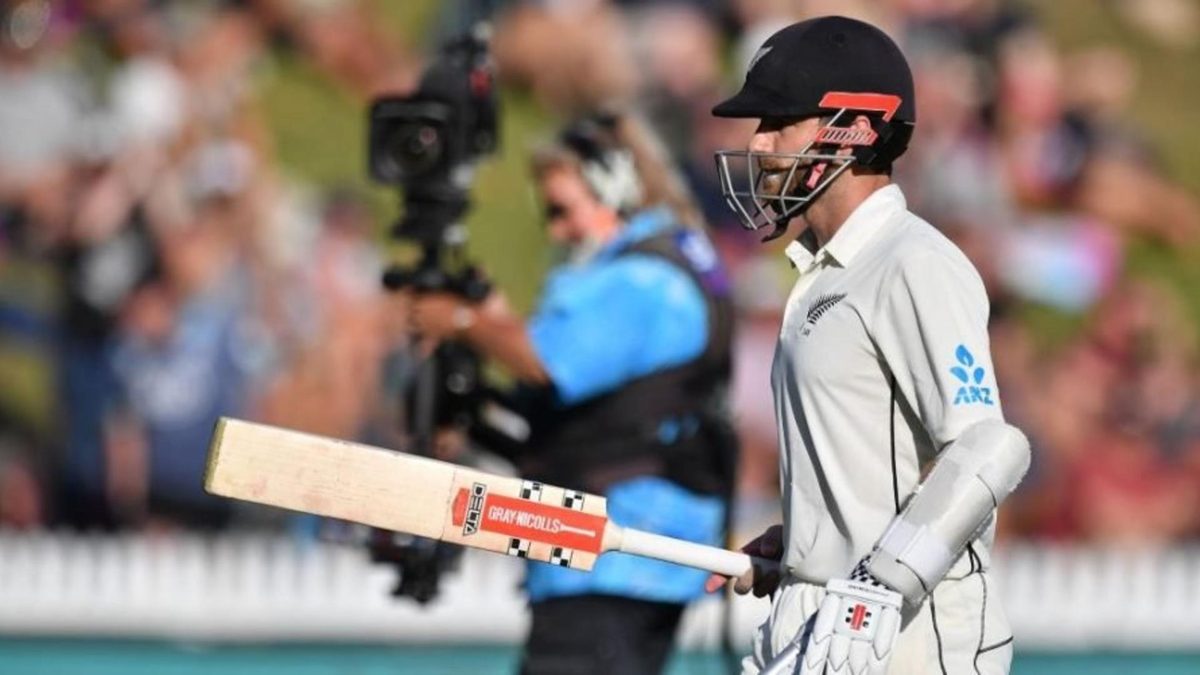
No.7 in Wisden’s Test innings of the year list – part of the 2020 in Review series – is a defiant knock from New Zealand’s Kane Williamson against India.
No.6 in Wisden’s Test innings of the year: Jos Buttler’s 75 >
< No.8 in Wisden’s Test innings of the year: Azhar Ali’s 141*
Kane Williamson 89 (153)
New Zealand v India
Basin Reserve, Wellington
1st Test
February 21-24
Kane Williamson had a below-par end to 2019, a year that nearly saw him lead New Zealand to a maiden World Cup triumph.
He averaged 26.6 in the year after the end of that mind-numbing World Cup final against England. A hip injury sidelined him a few months after the Lord’s defeat when New Zealand lost another Super Over (yeah, that happened!) to England (again!). He then ended the year with a duck against Australia in the Boxing Day Test, with his side losing the first two matches of that series by crushing margins.
It seemed like his woes had seeped into 2020 when on the morning of the New Year, he was forced to skip training with a flu. Williamson went on to miss the New Year’s Test as New Zealand lost by 200-plus runs for the third time in the series.
As such, his first Test innings in 2020 came a month later against India at the Basin Reserve in Wellington. New Zealand might be the ‘nice guys’ in a world of rogue cricket teams, but at home, in their own beautiful country, they are anything but nice.
The pitches are tailor-made for their quick bowlers and resilient batsmen. They win the toss, opt to bowl first, unleash their quicks to rush through the visiting team’s top order, come in to bat with the pitch flattening out, and in the second innings bank on Neil Wagner’s large heart to seal the game for them.
[breakout id=”0″][/breakout]
The bespoke Basin Reserve surface was a beast. India were bowled out for 165 by day two after a rain-hit day one, but the surface wasn’t flattening out yet. There was uneven bounce, lateral movement and a whole lot of other things that kept India’s pace attack interested.
The first ball Williamson faced was a snorter from Ishant Sharma that kicked off the surface to bang him on the thumb and middle finger. The New Zealand skipper needed attention from the physio and was wincing in pain as he drove the next delivery to mid-off.
Through the length of that innings, Williamson would be troubled by the blow to his fingers. The pitch kept misbehaving and the bowlers got sharper, but Williamson was hell-bent on giving New Zealand a good lead.
While the surface was proving to be a nightmare for batsmen looking to play the ball on the up, Williamson drove good length deliveries with conviction, played the ball late like he had all the time in the world and manipulated the field in his own nonchalant way. He smashed five of his 11 boundaries through the cover region, never once losing control over the shot.
When New Zealand went past India’s total to take the lead, Williamson had settled into a solid fifty-run partnership with Ross Taylor and had moved into the 70s. A run after the lead was taken, though, he would lose Taylor to the uneven bounce that the pitch kept throwing up every now and then.
Williamson, unlike the others, had judged this Wellington wicket to perfection. He had conquered the pitch and the Indian bowlers and looked good for a hundred when the unthinkable happened. On 89, he lobbed a catch to cover off a lazy drive against Mohammed Shami.
Normally, he would walk off smiling to himself, but here Williamson flung his gloves in disgust after crossing the boundary ropes. The man who showed little emotion in the minutes after that shattering World Cup final result had finally lost his cool.
He had no reason to, except that it probably didn’t add up to what he expected of himself that day. For mere mortals, it was a masterclass performance on a tough wicket where other batsmen barely got going. It set the template for his 2020, a year that saw him make his highest Test score — a stirring 251 against West Indies — and climb to No.1 in the ICC Test batting rankings.







